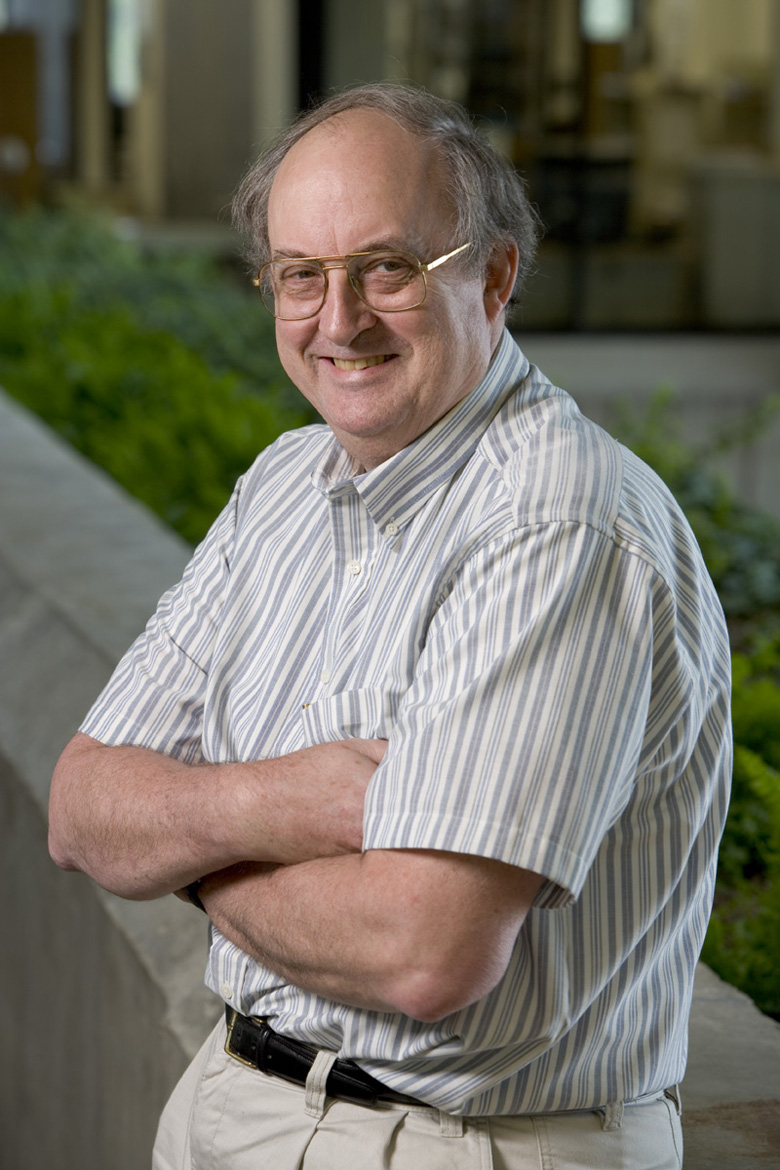Bill Bardeen, renowned quantum field theorist, retires

Bill Bardeen Photo: Reidar Hahn
From quantum chromodynamics to family genealogy, Bill Bardeen loves to solve puzzles.
As a theoretical physicist, his approach to solving physics problems about the fundamental nature of matter made him a world-leading expert on quantum field theory. In his spare time, as a genealogist, the same persistence resulted in tracing the Bardeen family line back to Massachusetts in 1717.
In December, after 35 years of tackling theoretical physics problems at Fermilab, Bardeen retired. There is little doubt, however, that he will continue to be fascinated by puzzles.
“I have to get really into a problem,” Bardeen said. “I strive to understand things as deeply as I can.”
Bardeen joined Fermilab’s theory group in 1975 on the invitation of Ben Lee, a Fermilab pioneer who chaired the group from 1973 until his tragic death in 1977. Bardeen was working as a professor in Stanford University’s physics department, but the opportunity to collaborate with Lee, whom he had worked with as a post-doc at Stony Brook University in the ’60s, made the decision easy, at least for him.
Bardeen’s wife, Marge Bardeen, who heads Fermilab’s Education Office, and his two children, were not as keen to leave sunny California behind, he recalled.
“The vote was three to one, but the tally got overwhelmed by one vote in particular,” Bardeen said. “I felt that I could do my best physics here.”
There was no denying that the Bardeens were Midwesterners at heart. Bill Bardeen was born in Pennsylvania and moved to Champaign, Illinois when he was nine. He met Marge in a chemistry class during his senior year of high school, but they didn’t start dating until they were both students at Cornell University. They married his junior year of college and went on to have two children, Chuck and Karen.
Bardeen is best known for his work on quantum field theory anomalies, which play a fundamental role in defining the Standard Model of particle physics. He received the J.J. Sakurai Prize of the American Physics Society in 1996 for his work on quantum chromodynamics. In 1984, he became a Fellow of the American Physical Society and was elected to the American Academy of Arts and Sciences in 1998, the National Academy of Sciences in 1999 and as a fellow of the American Association for the Advancement of Science in 2008. He chaired Fermilab’s theory group from 1985 to 1992, spent a year as the head of theory group at the Superconducting Super Collider, and then returned to Fermilab when the project was canceled in 1993.
Bardeen grew up in a family of physicists. His father, John Bardeen, was the only person to win the Nobel Prize for Physics twice. His brother, Jim, is a respected cosmologist, and his sister married a physicist. It was clear that physics was considered the highest of professions. Bardeen insists, however, there was little direct pressure to study physics at home.
“We didn’t talk ‘shop’ at home,” he said.
Bardeen recognized early that he had a talent for fixing things, such as the family’s lawn mower and dishwasher, along with numerous radios and electronics. During high school and college, he spent his summers working in biophysics and biochemistry laboratories at the University of Illinois. Intending to pursue a career in experimental physics, he only became interested in theoretical physics in graduate school.
“Bill deals tenaciously with complex and deep problems,” said Chris Hill, a Fermilab theoretical physicist who has worked with Bardeen since 1979. “His contributions are lasting and of the highest order.”
Hill credits Bardeen with being one of his main reasons for joining Fermilab.
“My thesis advisor, Murray Gell-Mann, had told me that Bill was one of the best people in the business,” he said.
When Hill got stuck on a problem, he turned to Bardeen for help. “I could be in a mountain of complexity and not know what direction to turn, but then I would explain it to Bill,” he said. “He would make some simple comments, and it always helped me get back on track.”
From taking post-docs under his wing to teaching Hill’s son how to play basketball at the famous Bardeen barbeques, Bardeen served as a mentor in many capacities during his tenure at the laboratory.
“Any time he can offer a helping hand, he does,” said Olivia Vizcarra, an administrative assistant in the theory group whose 8-year-old daughter, Saige, is Bardeen’s pen pal.
Any time that he travels, Bardeen sends a postcard about his trip to Saige, and she returns the favor. Her colorful artwork is displayed among the physics awards and stacks of theoretical physics papers in Bardeen’s office.
He will continue to tackle physics problems as a guest scientist. He also plans to focus on his family’s genealogy project and organizing his father’s memorabilia.
“I truly appreciate the opportunity to have been a part of the laboratory’s development,” Bardeen said. “From the early running of the Main Ring through the Tevatron, Fermilab has been the center of the universe for particle physics. It was fun to be a part of it.”


